Home Maintenance Tip: Cleaning Your Gutters
Delaying the task of gutter maintenance is a common tendency, but it’s an essential chore that’s not overly complicated and ensures their optimal functionality. Over time, rain gutters tend to accumulate a buildup of leaves and debris, making regular cleaning a prudent choice to prevent more arduous work down the line. Fortunately, gutter cleaning is a straightforward endeavor, and this guide will walk you through the fundamental steps for maintaining your gutters and downspouts.
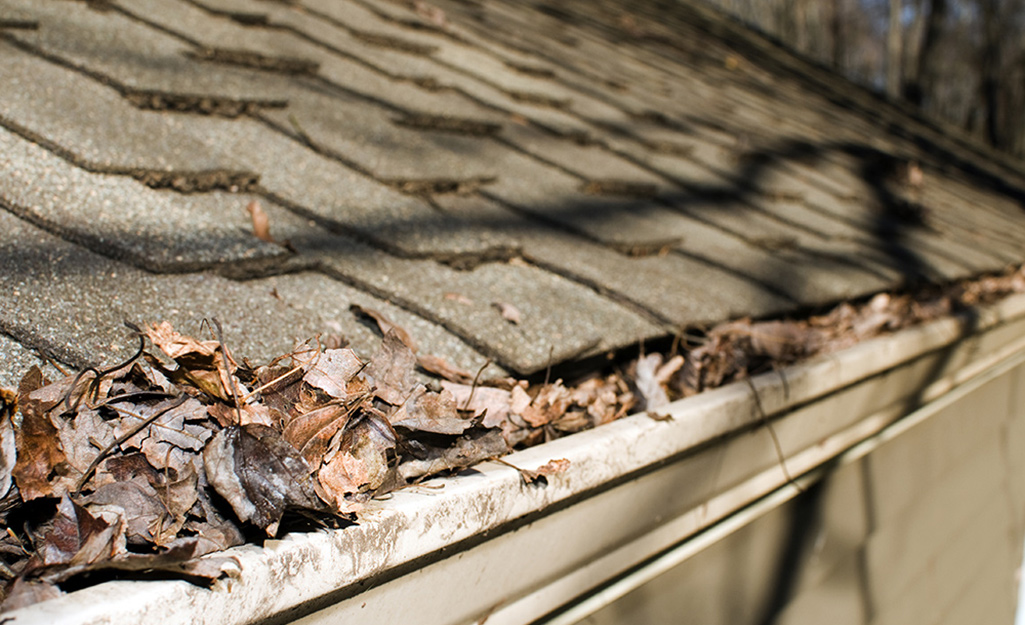
Why you should clean your gutters
A household’s gutter system plays a vital role in managing the flow of rainwater from the rooftop, ensuring the protection of your home’s roof, walls, foundation, and surrounding landscape. When debris accumulates within these gutters, it can lead to a range of problems, including sagging gutters, mold proliferation, moisture-related basement issues, roof leaks, and harm to both your home’s interior and exterior. Furthermore, clogged gutters may provide shelter for unwanted guests like rodents and other pests. Neglecting proper gutter maintenance can ultimately result in substantial repair expenses.
To maintain the effectiveness of your gutter system, it is recommended to undertake cleaning activities at least twice a year – once in the spring and again in the fall. If you have pine trees in proximity to your residence, the removal of needles should occur every three months to minimize the risk of gutter and downspout obstructions.
For those who are uncomfortable with ladder work or prefer to delegate this task, hiring a professional to clean your gutters is a viable option. The cost of such services varies based on your geographical location and the total linear feet of gutters requiring attention. Typically, expect higher prices for two- or three-story homes due to the increased complexity and elevation involved.
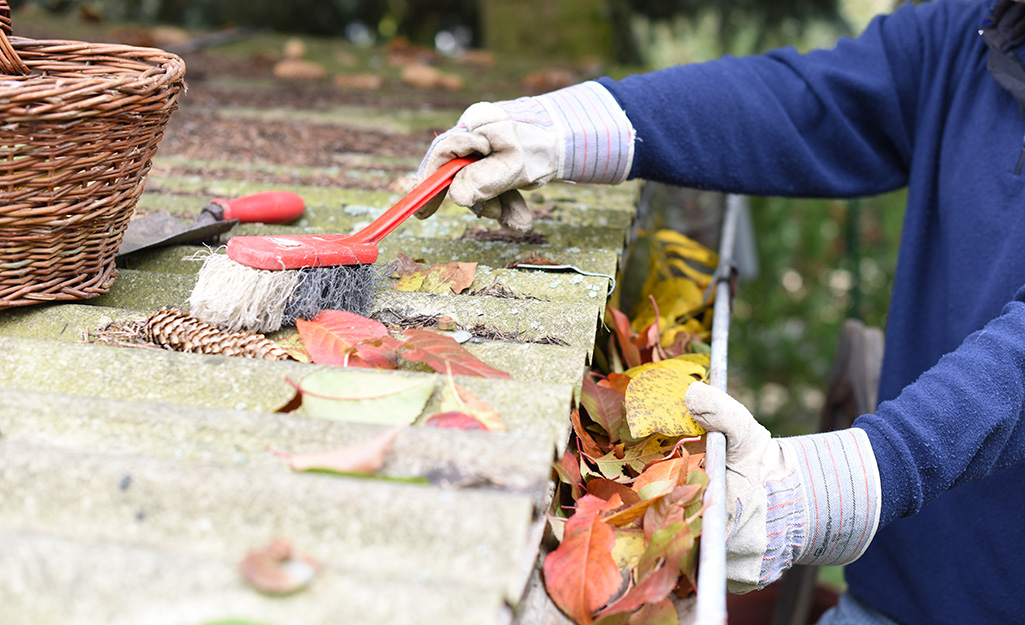
Things to Look For
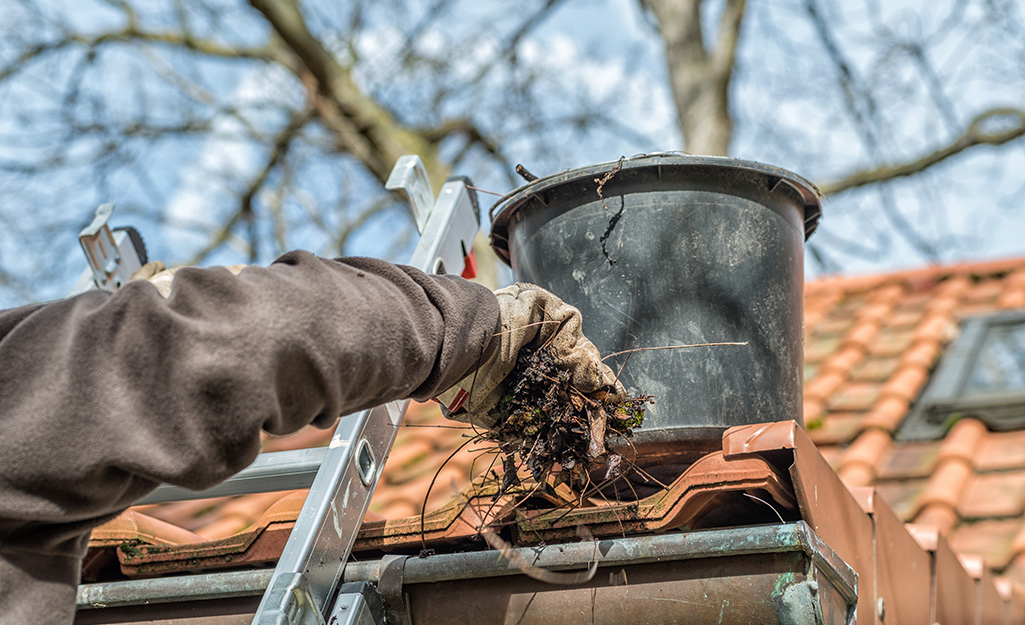
How to Clean Your Gutters and Downspouts
Consistent and meticulous cleaning is the key to maintaining gutters in optimal condition. With just a few tools and an afternoon of work, you can ensure proper water flow from your roof, protecting your home.
Cleaning your gutters in the early spring will prime them for the upcoming heavy spring and summer rainfall. In the early fall, it’s crucial to remove leaves and other debris that may have accumulated during the warmer months.
Whenever possible, it’s advisable to avoid cleaning gutters immediately after a rain. Allowing a few dry days to pass before tackling this task will permit the debris to dry out, simplifying the job considerably.
Commence your gutter cleaning project near the downspout and progress toward the closed end for the most efficient and effective process.
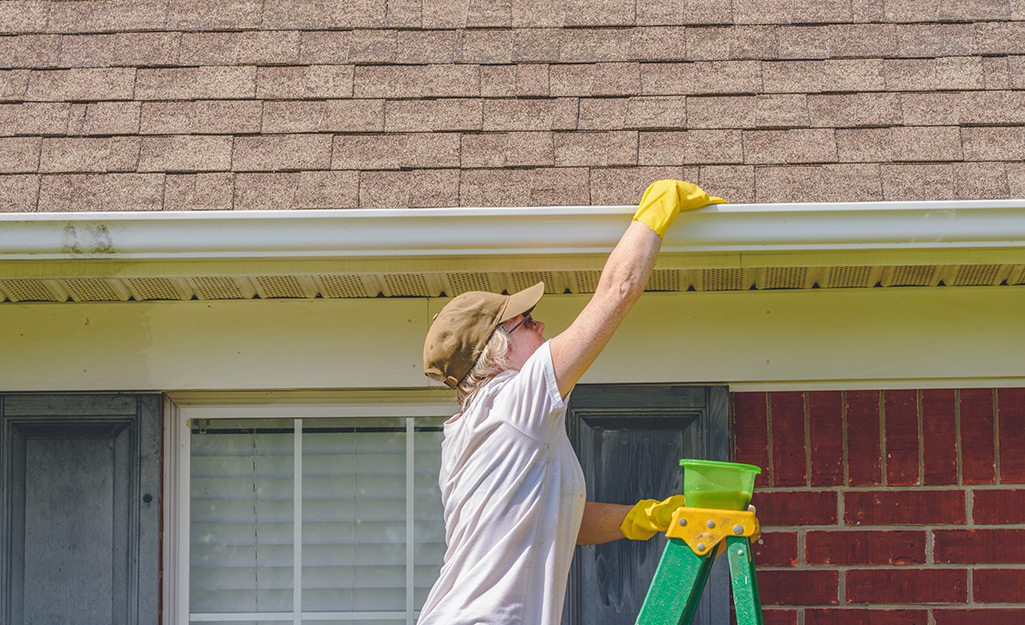
Ladder Safety
Gutter cleaning often involves working from ladders, and it’s crucial to prioritize safety at all times. Here are some safety guidelines to adhere to:
- Never ascend beyond the second-to-last step or rung of the ladder.
- Avoid overreaching while on the ladder to maintain balance and stability.
- Whenever feasible, use a step ladder on a stable, level surface.
- For two-story homes, opt for an extension ladder to access higher gutters.
- When using an extension ladder, consider employing a ladder stabilizer to enhance stability and prevent slipping.
- If you are uncomfortable with ladder work or have safety concerns, it may be wise to enlist the services of a professional gutter cleaning service to ensure the task is completed safely and effectively.
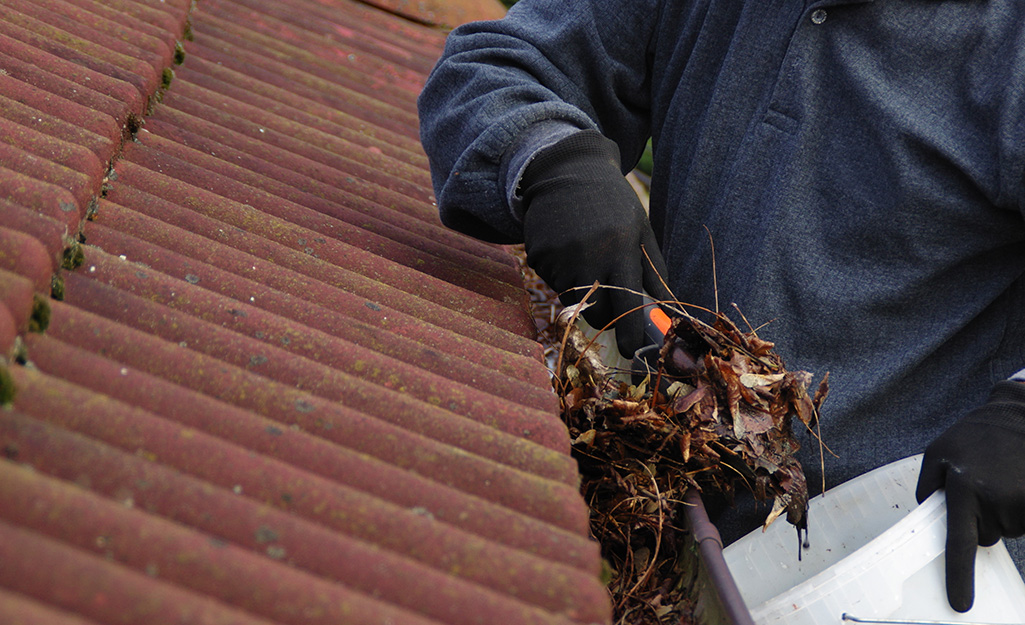
Clearing Debris
To facilitate your gutter cleaning task, it’s advantageous to have two buckets at your disposal. Here’s how to make the most of them:
- Utilize one bucket for collecting the debris you remove from the gutters.
- Dedicate the second bucket to store your tools and equipment.
- Hang both buckets from your ladder for convenient and easy access.
To ensure your safety and comfort during the process, follow these additional guidelines:
- Wear safety glasses to shield your eyes from any airborne particles, such as dried leaves and debris.
- If the debris is damp, consider wearing rubber gloves underneath your work gloves. This will help keep your hands dry while providing an extra layer of protection.
- Commence your cleaning task near a downspout, ensuring that your ladder is placed securely on level ground before ascending.
- Remove and clean the downspout strainer as part of your maintenance routine.
- Eliminate larger debris, such as leaves and twigs, by hand.
- For compacted debris, employ a trowel or a gutter scoop to facilitate the removal process.
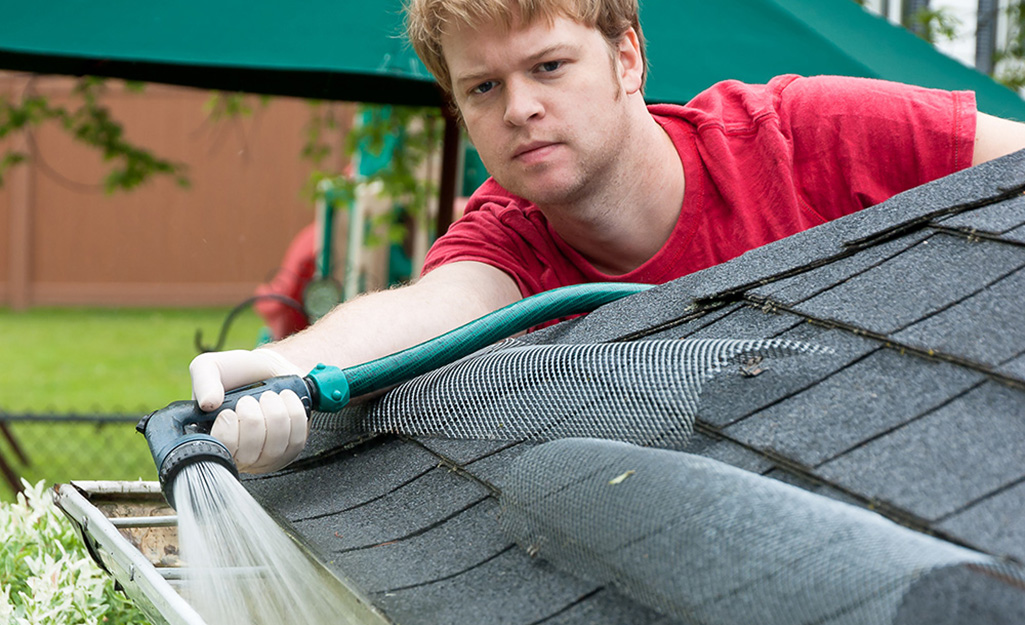
Flushing your Gutters
Once you’ve removed the majority of debris, it’s essential to thoroughly cleanse the remaining bits and dirt from the gutters. Here’s how to do it effectively:
- Equip your garden hose with a spray nozzle for optimal control.
- Begin flushing out the gutter with water, commencing at the far end and progressing toward the downspout to ensure thorough cleaning.
- Use a robust stream of water, but be cautious not to spray water underneath the roof shingles, as this can lead to water infiltration.
- If you prefer specialized tools, there are gutter cleaning attachments designed for your garden hose that can simplify the process.
- For the utmost power and efficiency when spraying gutters and downspouts, consider using a pressure washer, which can provide a more thorough and effective cleaning.
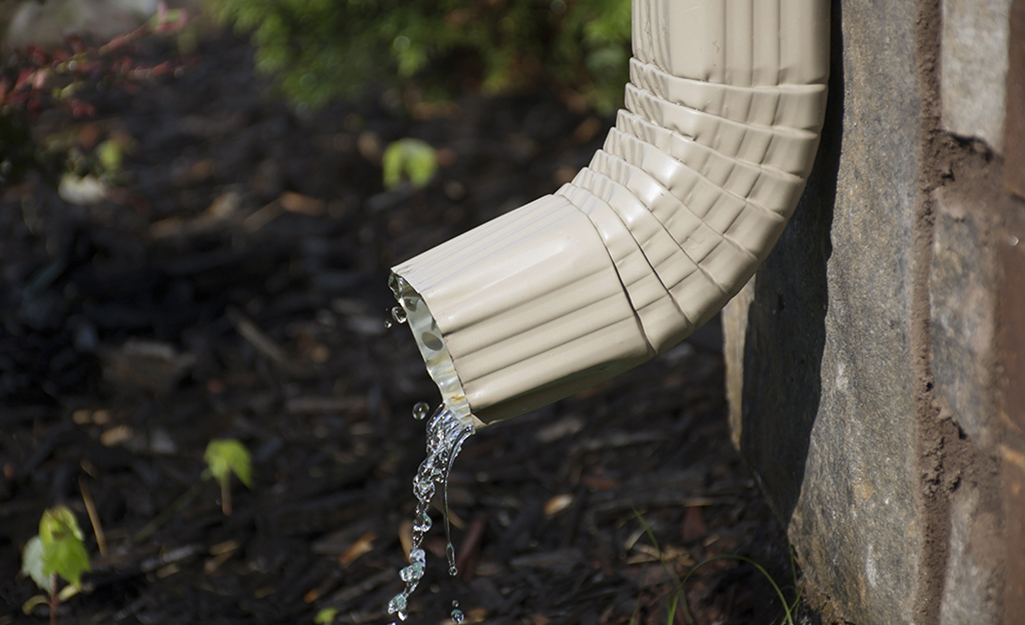
Downspouts
Once your gutters are clean and you notice that the water used for flushing isn’t draining quickly, it’s important to inspect the downspout for potential clogs and lodged debris. Follow these steps to address the issue:
- Begin by turning on the hose and spraying water down the downspout. If the amount of water coming out is less than what’s going in, it indicates a blockage.
- To address the blockage, carefully feed the hose up the downspout from ground level.
- Turn the hose on at full pressure to attempt to dislodge the clog.
- If high-pressure water doesn’t remove the blockage, consider using a plumber’s snake to break up the obstruction.
- In cases where your downspout connects to an underground tiling system, you may need to remove the bottom end of the downspout to access the longer length of the downspout and address the blockage effectively.
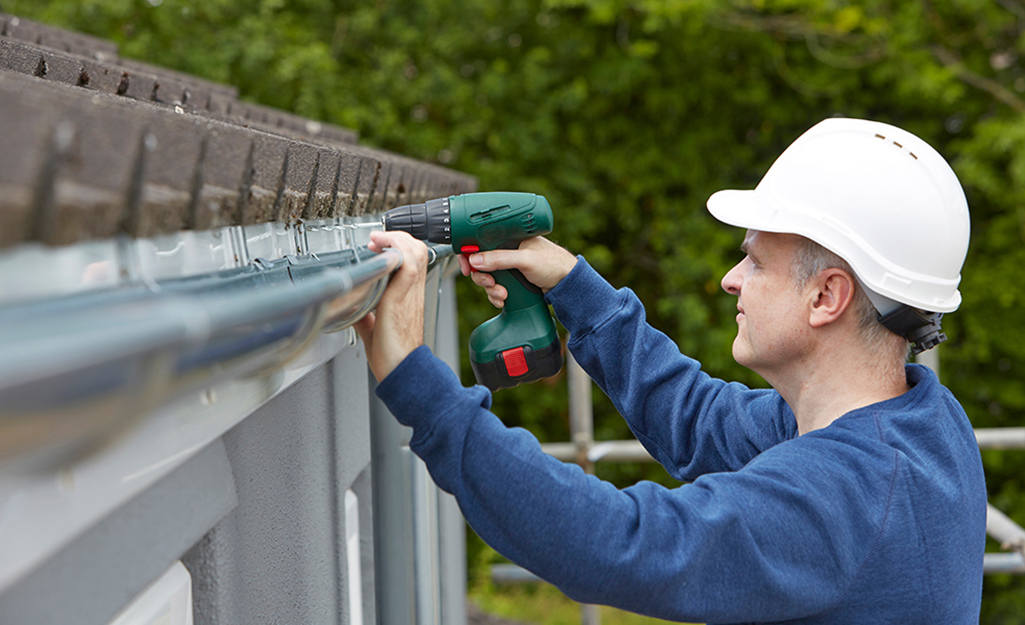
Gutter Drainage and Slope
After ensuring that the downspout is free from clogs, it’s time to perform a final check and maintenance on your gutters. Here’s how to complete this step effectively:
- Once again, flush the gutters to confirm proper water flow and drainage. Be vigilant for any potential leaks at the seams.
- If you notice standing water in the gutter, it’s an indication that the gutter is not sloped correctly. Gutters should slope at a rate of approximately 1/4-inch for every 10 feet toward the downspout. If your gutters do not meet this slope requirement, you may need to detach the hangers and make the necessary adjustments to achieve the proper slope.
- Ensure that all gutters are securely and firmly attached to the house. Reattach or add support hangers as needed to maintain stability and prevent sagging.
- Thoroughly inspect each gutter section and the downspout for any signs of damage, such as cracks, splits, or bent components.
- If you identify any damage or issues, take the necessary steps to repair or replace the affected sections. This may involve adding support hangers or reattaching gutters to the fascia to ensure the gutters are in optimal condition and functioning as intended.
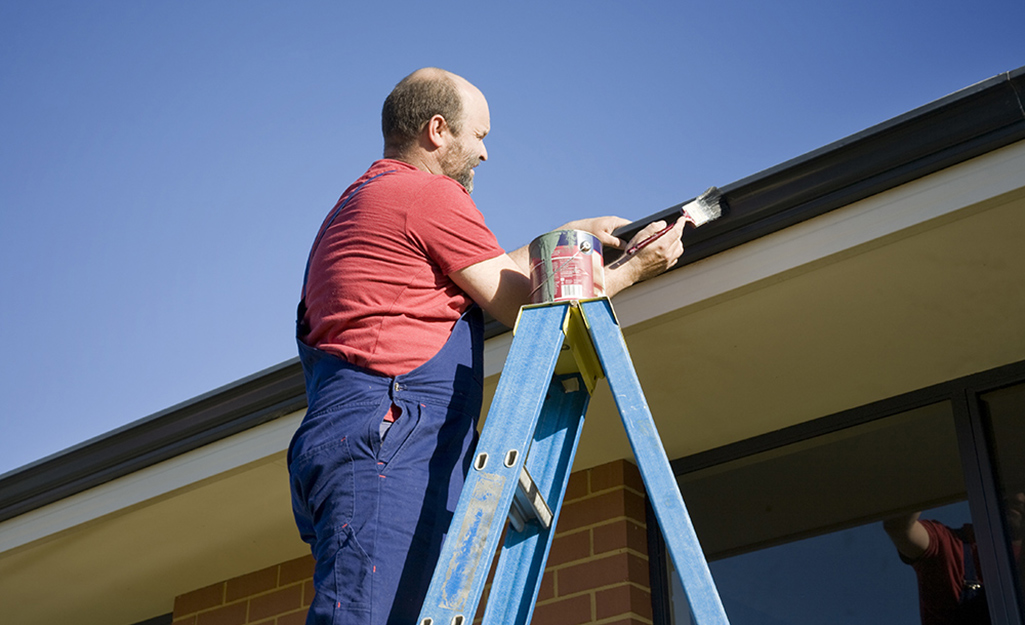
Finishing the Job
To complete your gutter maintenance, follow these final steps for a polished finish:
- Seal any leaking seams and joints with gutter sealant, adhering to the product’s instructions for proper application. This helps prevent water leakage and ensures the integrity of your gutter system.
- If the exterior of your gutters requires a makeover, utilize a pressure washer to remove any mildew and accumulated dirt. If necessary, consider touching up the paint to enhance their appearance and protection.
- With your gutters now debris-free and functioning efficiently, you may want to contemplate installing gutter screens. These screens can help reduce the need for extensive future cleaning, saving you time and effort.
Cleaning your gutters is an essential home maintenance task, and armed with the right tools and this guide, you can confidently undertake the work and repairs yourself. If you require a ladder to access your gutters, consider renting one from your local Home Depot Rental service.
However, if you find yourself short on time or simply prefer to leave the gutter maintenance to the experts, don’t hesitate to give us a call. We offer professional gutter repair services to ensure your gutter system is in top-notch condition and safeguarding your home effectively.
Images courtesy of The Home Depot






